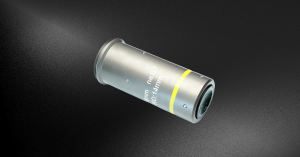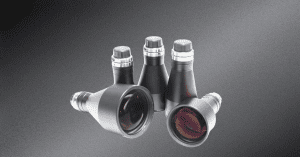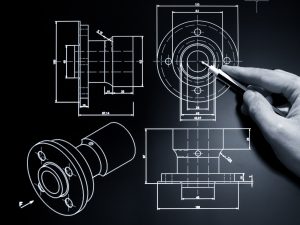Telecentric Lenses
Telecentric lenses, including image space telecentric lenses, are instrumental in various optical systems due to their unique characteristics. These lenses play a pivotal role in ensuring consistent measurements across a range of applications, with keywords like working distance, aperture stop, image size, object distance, bi-telecentric, fixed focal length, optical system, depth of field, and distance from the lens taking center stage.



Avantier Telecentric Lenses and Working Distance
One of the crucial aspects of telecentric lenses is their compatibility with a significant working distance. Working distance refers to the space between the lens and the object under observation. Telecentric lenses excel in providing sufficient working distance, making them ideal for applications where physical proximity to the object is a requirement. This characteristic allows for flexibility in positioning and facilitates accurate measurements.
Aperture Stop and Image Size
The aperture stop in telecentric lenses plays a critical role in controlling the amount of light entering the optical system. This feature ensures precise control over image size and contributes to the overall accuracy of measurements. By adjusting the aperture stop, users can fine-tune the image size to meet specific requirements, enhancing the adaptability of telecentric lenses in various scenarios.
Object Distance and Depth of Field
Object distance, the distance from the lens to the object being observed, is a key consideration in telecentric lens applications. Telecentric lenses maintain a constant image size regardless of changes in object distance, thus eliminating variations in magnification. This feature is particularly beneficial when capturing objects at varying distances within the same field of view, enhancing measurement precision and mitigating depth of field concerns.
Telecentric Lenses vs. Conventional Lenses
Conventional lenses exhibit angular fields of view, leading to diminishing magnification as the distance between the lens and the object increases. This angular field of view also introduces perspective errors (parallax).
Telecentric lenses, on the other hand, offer a constant, non-angular field of view that remains consistent regardless of distance. This feature ensures that magnification remains stable throughout the depth of field. This quality is invaluable in machine vision applications where object positioning may vary, providing consistent imaging even in scenarios where conventional lenses would introduce calibration errors.
While telecentric lenses do not inherently possess a larger depth of field, any resulting blurring is symmetrical on both sides of the focal point. This symmetry enables the accurate measurement of features of interest, such as corners, even when they are not in perfect focus.
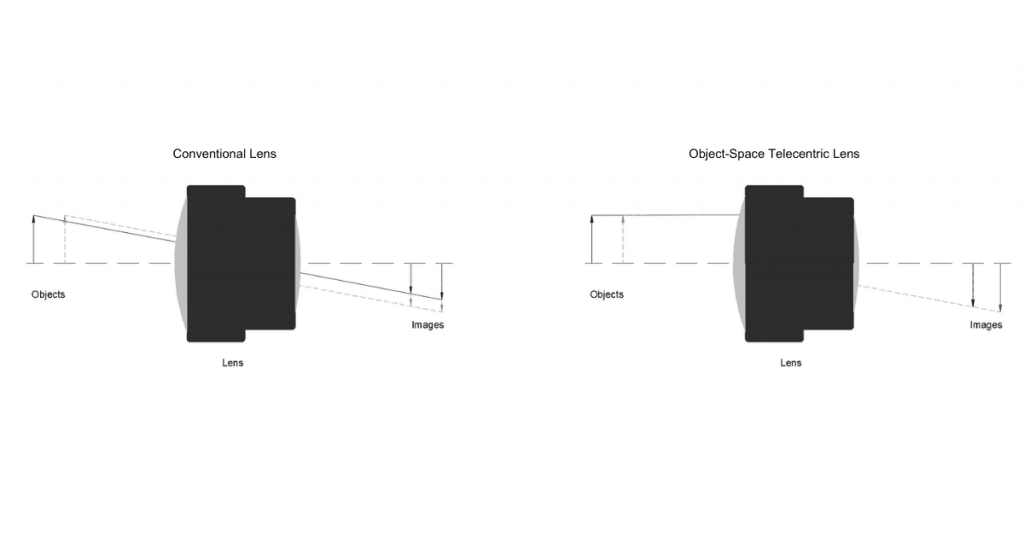
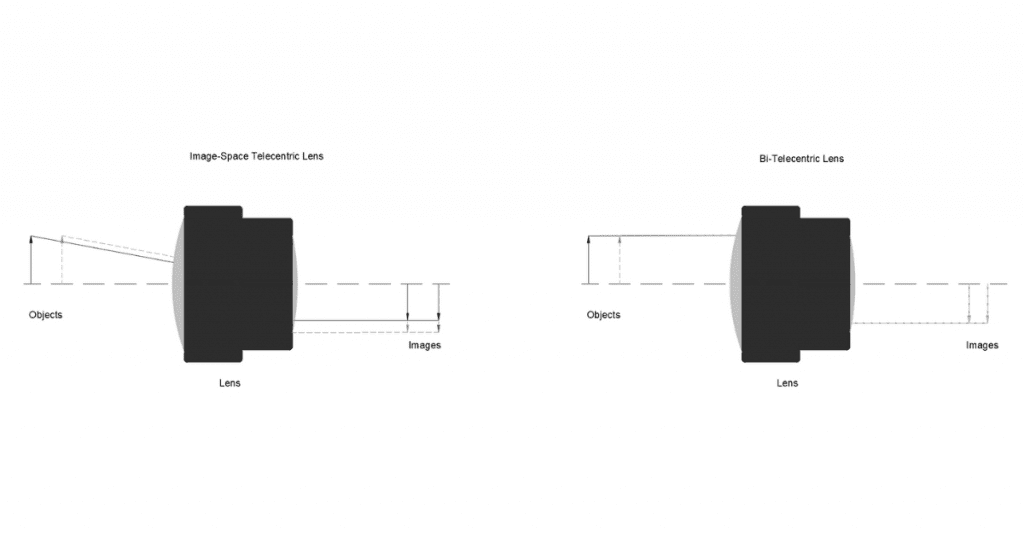



Bi-Telecentric Lenses for Diverse Applications
Bi-telecentric lenses, characterized by both entrance and exit pupils positioned at infinity, are versatile tools in optical systems. They offer unmatched advantages such as consistent image size and magnification in both image and object space, regardless of distance or position within the field of view. This unique attribute makes bi-telecentric lenses suitable for a wide range of applications, including those requiring fixed focal length and precise measurements.
Optical System Efficiency and Distance from the Lens
Telecentric lenses, particularly image space telecentric lenses, contribute to the efficiency of optical systems. By ensuring that chief rays remain parallel to the optical axis, these lenses minimize aberrations and distortions, resulting in clearer images and more accurate measurements. Additionally, their design reduces the impact of variations in distance from the lens, making them dependable tools in scenarios where objects may not be consistently positioned.
Benefits of Avantier’s Telecentric Lenses
- High Performance
- Industry Leading Price to Performance Ratio
- Designed for Machine Vision and Metrology Applications
- Rugged Housing
- Custom Lens Mount and Coating
- In-house Manufacturing and Testing
- Detailed Test Report for Each Lens
Specifications – Telecentric Lenses
Working Distance | 40-700mm |
Magnification | 0.0205 – 8 |
Aperture | >F5.5 |
Object FOV | 1 – 390.4mm |
Image FOV | 6 – 82mm |
Interface | M95, M72, M58, M42, C, F |
In conclusion, telecentric lenses, including bi-telecentric variations, are indispensable components in optical systems, offering advantages such as constant image size, consistent measurements, and reduced sensitivity to object distance. These lenses, equipped with aperture stops, optimize image size and provide precise control over depth of field. Whether in machine vision or other applications, telecentric lenses from Avantier are engineered to deliver unparalleled performance and reliability. Please contact us if you’d like to schedule a consultation or request for a quote on your next project.
WE CAN HELP YOU!
Contact us NOW for sales & expert advice.


